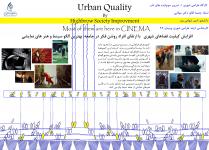Jean-Luc Godard, through his films, talks about architecture almost as easily as he talks about cinema itself. In honor of the nouvelle vague icon, who passed away today at the age of 91, we revisit How Architecture Speaks Through Cinema.
There are several ways of making films. Like Jean Renoir and Robert Bresson, who make music. Like Sergei Eisenstein, who paints. Like Stroheim, who wrote sound novels in silent days. Like Alain Resnais, who sculpts. And like Socrates, Rossellini I mean, who creates philosophy. The cinema, in other words, can be everything at once, both judge and litigant. — Jean-Luc Godard
Within Godard's list of ways to make films, we can add another: cinema as architecture. The interaction between cinema and architecture - "the inherent architecture of cinematic expression and the cinematographic essence of architectural experience" is a complex, often multifaceted dialogue between both disciplines. [2]
Regarding the production of these two distinct "art forms", the architect Juhani Pallasmaa emphasizes that both are realized with the help of a team of specialists and assistants as a result of collective effort. However, another aspect emerges: both are the arts of the author, the fruit of a creator, an individual artist. Let us turn our attention to this and other moments in which these arts intersect.
Set construction is undoubtedly one of these moments of intersection. Allowing for great control over shooting conditions, sets built in closed studios enable the possibility of getting rid of limitations related to the climate, lighting and eventual setbacks that may occur in shooting in "real" environments. Alfred Hitchcock is an example of a filmmaker who has made extensive use of sets to create spaces of tension and horror in his productions.
2020
Tabriz Art University
Cinema and Architecture
cultural preservation
Amin Shahamipour
Asghar Molaei


